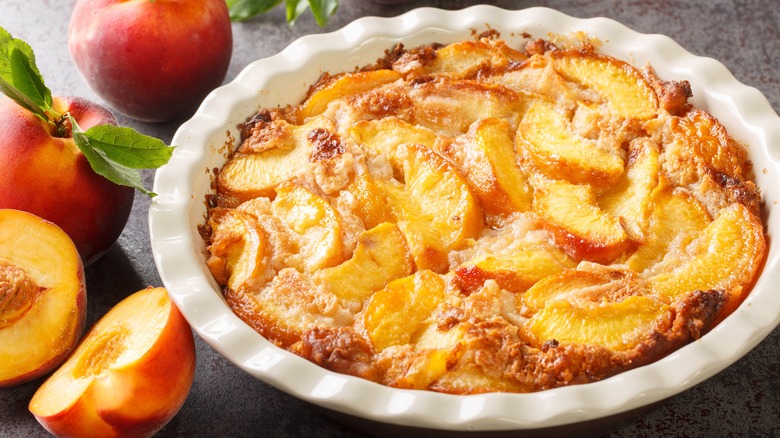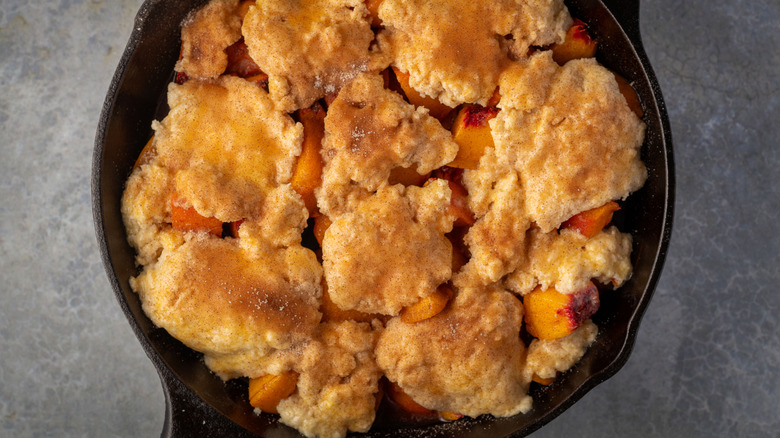The Best Way To Bake Cobbler For Unbelievable Texture
The charm of cobbler lies in its contrasting blend of juicy fruit filling — such as peaches, blackberries, cherries, or apples — and crumbly biscuit topping. Made by resourceful colonists who adapted traditional Dutch and British recipes to available ingredients, the dessert evolved into a must-try Southern staple. Mashed spoke with Edgar "Dook" Chase IV, the executive chef at the famous Dooky Chase's Restaurant, about how he prepares the tastiest cobbler possible. A pillar of New Orleans, the family-run restaurant opened in 1941 and has been a testament to the Chases' heritage and love of feeding patrons.
Chase's cobbler is particularly notable for its unconventional yet fruitful (pun intended) baking method. "The beautiful thing about our cobbler is we try to find that balance between a dough and a cookie," he explains. "How we taste it in the restaurant is, if you taste a little piece and it tastes like cookie dough, that's how we want it." Plus, the buttery crust is spread over the fruit — rather than beneath it — to achieve a crispy, golden brown, cookie-like finish that rounds off the supple underside.
A cookie-like crust is essential for great cobbler
In traditional cobbler — like this Texas-style peach cobbler recipe — the batter is put on the surface of the skillet or dish, so as it cooks, the dough rises through the fruit layer. However, Edgar "Dook" Chase IV reverses this process by placing the uniformly-cut peaches and syrup at the bottom, allowing them to "candy down and thicken up," as he puts it, and then covering the top with the biscuit crust. This technique serves a specific purpose: "The reason we [put the cobbler crust on the top] is for that cookie crunch. I like texture, so texture, flavor, all of that," he explains.
Chase notes that the upper crust provides a satisfying crunch. Meanwhile, the underside of the dough absorbs the syrup and peach juices. This offers both the firmness of a cookie and the softness of a chewy, fruit-infused base. Last but not least, for a warm, aromatic touch that complements the sweetness of the peaches, Chase sprinkles cinnamon on top of the cobbler. The cobbler recipe simultaneously honors the history of the iconic family eatery and elevates the Southern classic.
Chase is certainly no stranger to the New Orleans hospitality scene, as he proudly carries on a longstanding culinary legacy. His grandmother, "Queen of Creole Cuisine" Leah Lange Chase, and his great-grandmother (also a co-founder), Emily Chase, were the restaurant's only two executive chefs before he took the reigns.

